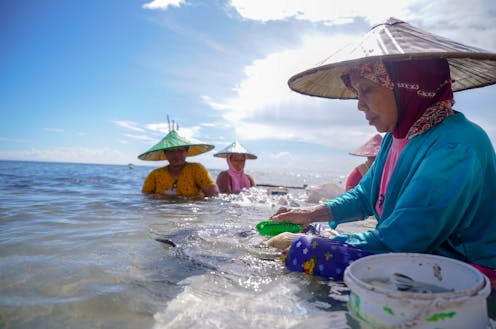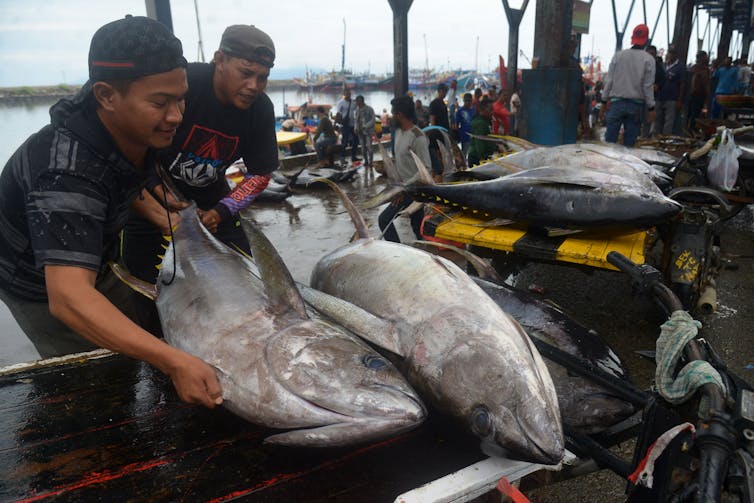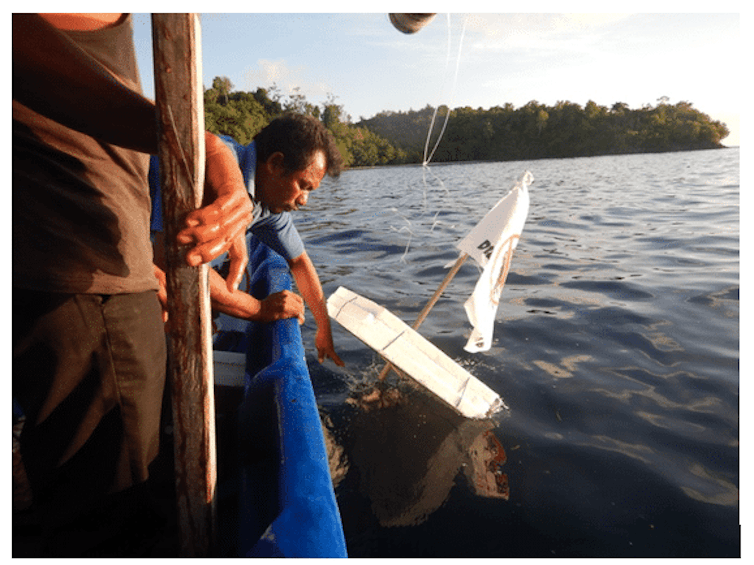
As the world’s largest archipelago, Indonesia has taken steps to protect its marine resources. More than 23.14 million hectares are covered as marine protected areas (MPAs).
Marine protected areas are designated areas of the ocean that are protected for conservation purposes. The majority of these areas are managed by district governments.
The country aims to increase the total area of MPAs to 32.5 million hectares by 2030, representing 10% of the country’s total marine area.
But so far, communities and people have been left out of this target.
As the number of protected areas grows, fisher households in Indonesia are still among the poorest of the poor. In fact, statistics indicate fewer and fewer individuals are opting to stay in this sector.
Indonesia needs to improve its planning and management of its protected areas to ensure coastal communities are included.
Our recent report, “Trends in Marine Resources and Fisheries Management in Indonesia: A Review”, published by the World Resources Institute Indonesia, highlights three ways to put people at the centre of ocean ecosystem management.
Protect essential ecosystems
MPAs can provide job security for people living in coastal areas because they can ensure sustainable seafood production.
To do this, Indonesia must include essential ecosystems like mangroves, seagrass and coral reefs in its marine conservation planning.

Research suggests less than 20% of Indonesia’s marine protected areas protect essential ecosystems.
This could put essential ecosystems in danger. In the densely populated island of Java, for example, mangroves in unprotected areas have suffered from large-scale deforestation and degradation.
The consequences are dire: according to recent research, a 1% increase in Indonesia’s mangrove loss could result in a decline in annual fishery household income of between 5.3% and 9.3%.
Designated protected areas will create an opportunity to restore degraded ecosystems while improving community livelihoods. For example, mangroves in protected areas in Belitung (an island in southeastern Sumatra) have been successfully restored and it now creates jobs from fish farming and tourism.
Integrate management of protected areas and fishing zones
Conservation areas are crucial for sustainable fisheries and they benefit small-scale fishermen.
Sustainable fisheries should maintain a balance between conservation and profitability.

To do that, Indonesia continues to establish more conservation areas, whether government-led protected area or with other conservation status, inside its fishing zones.
Currently, the proportion of protected areas within important fisheries areas remains very low.
In places with great fishing potential like Maluku and Natuna each in western and eastern Indonesia, only a small percentage of the areas (7.7% and 7.2%, respectively) have been set aside as protected areas.
Read more: The Loss and Damage Fund: How can Indonesia use it to boost climate adaptation efforts
Indonesia is changing its fishing areas management strategy by not just focusing on profitable fish like tuna anymore, since it hasn’t been effective in preventing overfishing. Instead, the country is adopting a new approach to improve fisheries management and preserve resources for the future by taking environmental factors into account.
Encourage other supporting areas
Indonesia should also expand its conservation efforts to include the adoption of traditional fishery practices.
In eastern Indonesia, for instance, there is a fishing ritual known as sasi or to prohibit the exploitation of natural resources in a period of time.
A community in Popisi village in Central Sulawesi, has managed to harvest octopus sustainably by exercising fishing ground’s temporary closure.

In Sekaroh, Lombok, West Nusa Tenggara, the community has successfully practiced awig-awig law. This includes benefit sharing and regulating catch areas, to ensure sustainable stock of sea cucumber.
The government must integrate the adoption of these practices in the management of the MPAs.
This approach will ensure long-term sustainability, conserve cultural heritage and maintain the wellbeing of communities reliant on these resources.
An integrated approach in marine conservation, through networks of protected areas, can promote collaboration between regions, reduce conflicts of interest, accommodate diverse customs and local wisdom and facilitate knowledge sharing.
This approach could lead to more effective marine conservation outcomes in Indonesia, benefiting both the environment and local communities.
Read more: Farmers groups lead the way in adapting to a changing climate
Both the national and regional authorities must improve their management of MPAs. This would involve tackling operational challenges such as insufficient funding, inadequate training programs, and staffing limitations – all of which have been highlighted in our report.
Lucentezza Napitupulu was an Economic Researcher at World Resources Institute Indonesia during the development of the Report. The Report is funded by the David and Lucile Packard Foundation.
This article was originally published on The Conversation. Read the original article.







